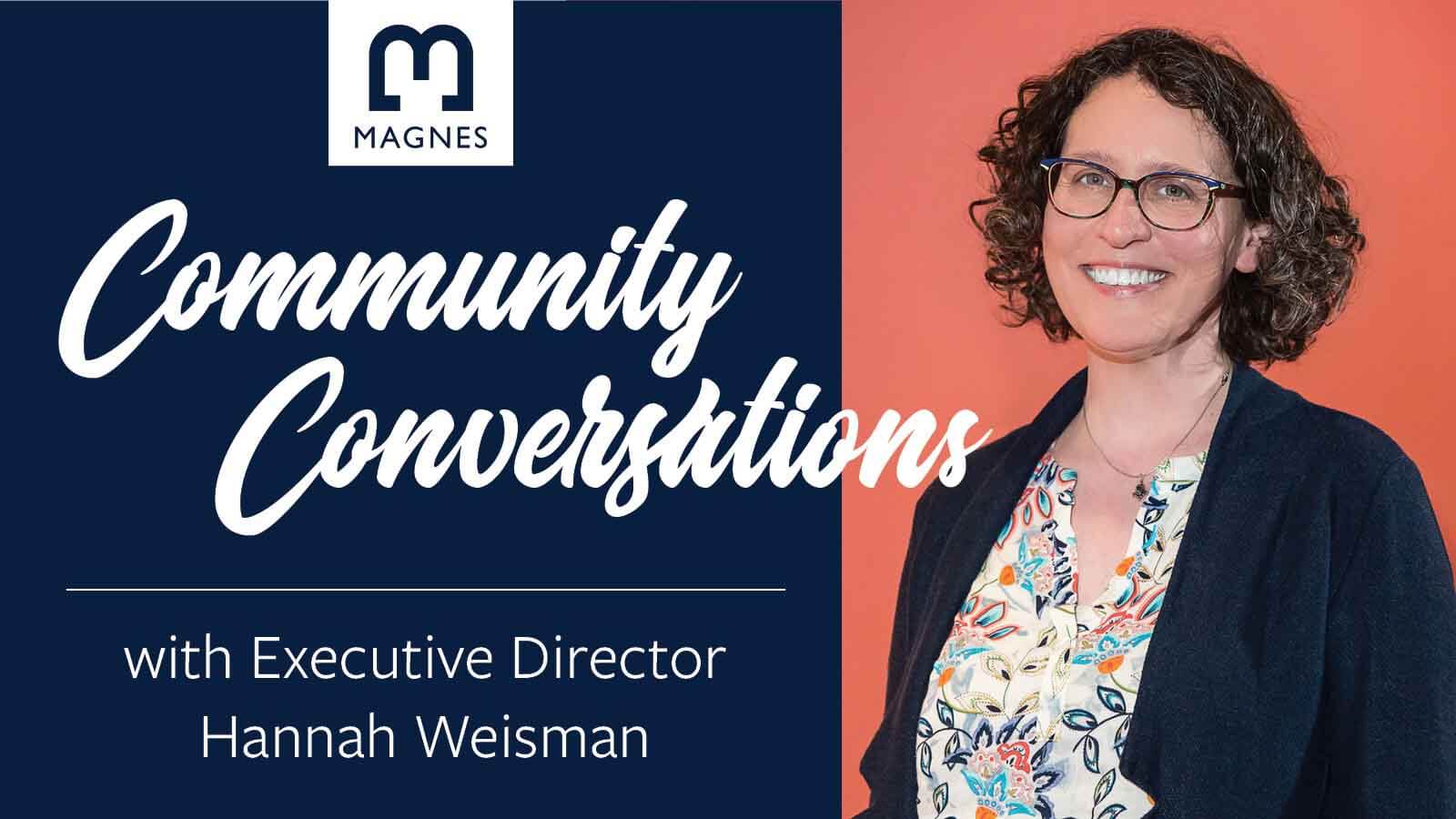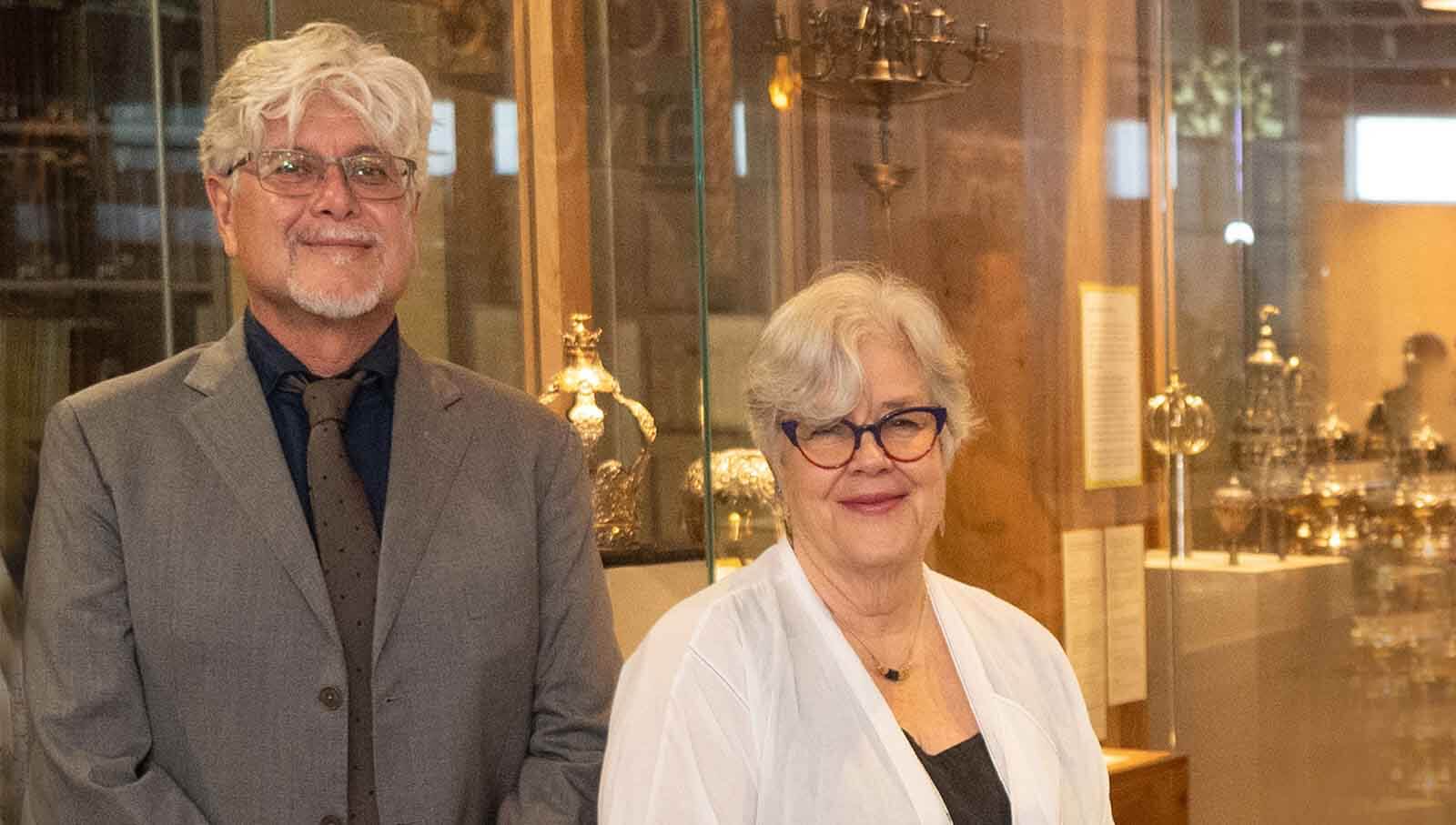News
Brought to Light: The Storied Collections of the Judah L. Magnes Museum – 10.27.2003
October 27, 2003
BERKELEY – Throughout its 40-year history, the Judah L. Magnes Museum has searched the world for objects that illustrate the triumphs and struggles of the Jewish people.
When the Jews of Morocco fled their homeland, leaving behind ritual objects and cherished mementos, museum representatives traveled to Africa to collect artifacts of the disappearing culture. When a Torah ark from the Queen Mary, a ship used to carry thousands of Jews from the genocidal policies of Adolph Hitler, needed a home, the Magnes offered it a permanent dwelling place.
To celebrate its 40th anniversary and public reopening, the museum will present Brought To Light: the Storied Collections of the Judah L. Magnes Museum. The exhibition is a colorful array of 130 textiles, ceremonial objects, documents, paintings, photographs, fine art, and artifacts that might have been lost if the museum had not preserved them.
The pieces, dating from the 1300s to the 1970s, come from Jewish communities in India, North Africa, Europe, Kurdistan, North America, and the Middle East and include works from artists such as Dorothea Lange, Marc Chagall, Sir Jacob Epstein, and Harold Paris.
Seymour Fromer, Director Emeritus and co-founder of the museum, personally selected the objects that he felt reflected the scope of the collection.
Highlights from the exhibit include:
- A pencil sketch by Albert Einstein that illustrates the phenomenon of length contraction. In 1934, while a professor at Princeton University, Einstein befriended the famed Russian violinist Toscha Seidel. Einstein gave Seidel this sketch in exchange for pointers on playing the violin, according to Seidel family legend. The Judah L. Magnes Museum obtained the drawing in the 1970s from Seidel’s widow. It has never been shown. The exhibit will also display a program for a benefit concert for German Jewish refugees that featured Einstein and Seidel.
- The ark from the Queen Mary. In the 1930s, German Jews seeking to flee Hitler’s genocidal policies were banned from using Lloyd’s, the main German shipping line. The British Jewish community appealed to the Canard White Line to assist the Jews by accepting them as passengers. The company was in the middle of building an Art Deco ocean liner called the Queen Mary and agreed to include a synagogue—regarded by many Jews as an act of defiance against Nazism. Thousands of Jews worshipped in the ship’s temple from 1936-1939, as did hundreds of Jewish soldiers once the ship was converted to a troop carrier. After the Queen Mary was decommissioned in 1976, a number of small southern California temples used its ark until the Magnes obtained and restored it in 1992.
- The Torah ark is a beautiful example of Art Deco dcor. It is a little more than 6 feet tall (78 inches), has a wood cabinet pedestal with a single door inlaid with a metal grill adorned by lines and spirals. Cecil Jacob Epril designed the ark and synagogue.
- Inquisition papers from the 17th century detailing a 16-year old Majorcan boy’s interrogation and eventual death. Baruch Braunstein, a graduate student at Columbia University in the 1930s, traveled to Majorca, a small island off the east coast of Spain, to write a book on the Inquisition. He obtained original, hand-written documents and trial transcripts detailing the Roman Catholic tribunals investigating heresy and brought them back to the United States. Braunstein eventually became a rabbi, and moved to Berkeley, CA once he retired. He gave lectures on the Inquisition at the Judah L. Magnes Museum. The museum purchased the Inquisition documents after his death.
- A scrapbook from Koppel Pinson, a Queens College history professor who was appointed Director of Education and Culture for Jewish Displaced Persons in Germany and Austria by the Joint Distribution Committee in 1945. Pinson’s job was to locate Jewish cultural treasures looted by the Nazis. Pinson’s scrapbook includes correspondence with Judah L. Magnes, then the president of Hebrew University, who urged Pinson to regard Palestine as the rightful place to preserve the looted treasures. The museum received the scrapbook in 1991 after the death of Pinson’s widow.
- An unusual 1920s copper camel lamp from Syria. Mary Schussheim lived with her husband, Rabbi Morris Schussheim, in Palestine from 1929-30, and traveled extensively throughout the Middle East collecting furniture. Pioneer artists in Palestine at that time were working to create a new Zionist art aesthetic and believed it would emerge by blending their work with the myriad of styles from the region. Schussheim brought back her furniture collection to Providence, R.I. and used it in educational displays. Schussheim eventually moved t to the Bay Area to be close to her daughter and donated her pieces to the museum.
- The lamp has a copper camel at its base with intricate strings of beads hanging down around the animal. It was made in the 1920s, purchased in Damascus, and is an unusual example of Middle Eastern style decorative arts.
The exhibition marks the public reopening of the Judah L. Magnes Museum. The museum, which was founded by Seymour and Rebecca Fromer in 1962, merged with the Jewish Museum San Francisco in January 2002 for about 18 months. The Judah L. Magnes Museum became independent again in July 2003 and is the third largest Jewish Museum in the United States.
The exhibition was curated by Seymour Fromer and Sheila Braufman and designed by Ted Cohen.
Latest News
Keep Up-To-Date




